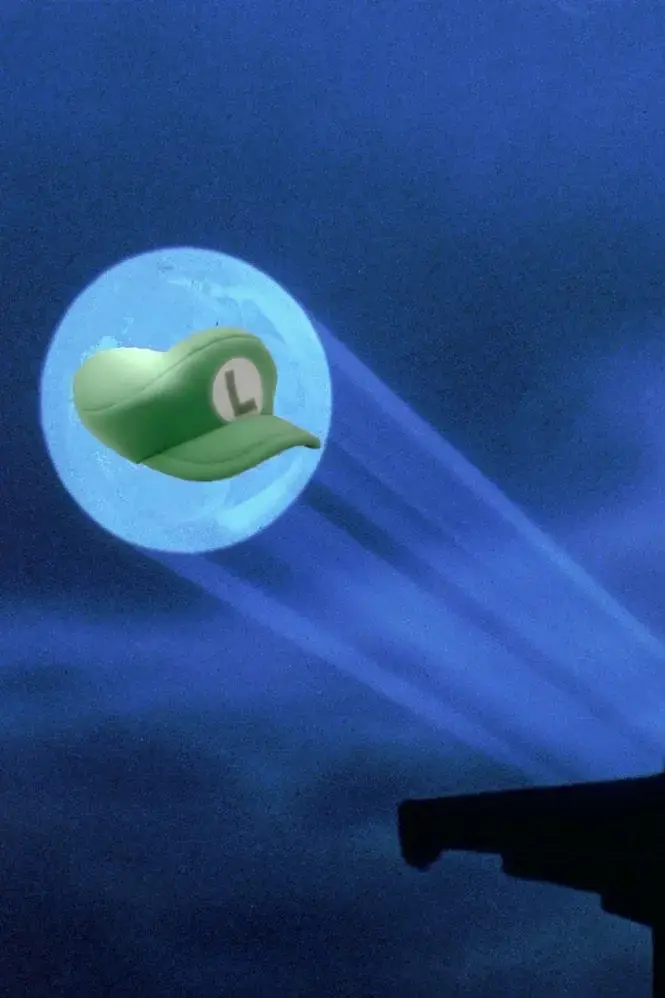If the election system requires tactical voting then it isn’t a democracy.
knightly the Sneptaur
- 26 Posts
- 627 Comments
Imagine being a Democracy and deliberately running an unpopular campaign so the financiers keep the money spigot on.

 2·1 day ago
2·1 day agoNo problem! I love getting into the comments under articles on quantum stuff 'cuz the topic is weirdly unintuitive from the classical perspective and a lot of folks share some common misconceptions about jargon like “teleportation” and “entanglement”. Please do ask if you’ve got any other questions! 😄

 1·1 day ago
1·1 day agoIt’s real, but the jargon is unintuitive.
“Teleportation” in the field of quantum mechanics refers to the process by which a quantum state can be copied from one place to another.
This process is like Shrodinger’s Cat, both alive and dead until you open the box to check. Quantum information simply does not exist until a measurement collapses it into back into classical information, so copying a quantum state literally involves teleporting the information about it from sender to receiver without allowing the box to be opened during the transition.

 3·1 day ago
3·1 day agoI think they were making a joke about the bluetooth protocol rather than literally describing the electromagnetic field.

 6·1 day ago
6·1 day agoYes. Information is what’s being teleported. The photons that carry the information still have to travel from sender to recipient but the information they contain doesn’t exist until it is received. Like how Shrodinger’s Cat is both alive and dead until you open the box to check.

 1·1 day ago
1·1 day agoNah, this technique is more like having a Shrodinger’s Cat that’s in two places at once. It won’t collapse the tyrrany of space, but it will allow us to build bigger and better quantum computers.

 1·2 days ago
1·2 days agoAs confusing as it seems, they’re correct. A physical medium is still necessary to enable the two parties to interact with each other, but the information that travels through it doesn’t exist until it is received.
The photons that carry the information are Shrodinger’s Cat, both alive and dead until the box is opened. It’s impossible to know one way or another without checking, so the information about the contents of the box doesn’t physically exist until then.
This has been proven via the double-slit experiment. Shining a beam of light at a card with two slits in it causes the resulting shadow to show a diffraction pattern. This is caused by the photons interacting with themselves as they pass through both slits simultaneously. However, if you put a photon detector in front of one slit to try and measure which slit the photon passes through, the diffraction pattern dissapears because the act of measuring it collapses the quantum uncertainty and prevents the photon from passing through both slits and interacting with itself. The information about which slit the photon actually passed through simply does not exist, and can’t be measured without destroying the quantum diffraction pattern.

 1·2 days ago
1·2 days agoIt is teleportation, but the thing being teleported is information about a quantum state.
The particles that carry this information are in a quantum superposition, like Shrodinger’s Cat. Because of quantum physics, the information they carry doesn’t exist until you open the box and measure it.
They call it “teleportation” because it allows us to copy quantum information from one place to another without ever opening the box and collapsing the superposition at any point inbetween.

 1·2 days ago
1·2 days agoThe optics are just the medium through which the qubits are entangled, the interesting part isn’t the lasers but the interaction between physically-separated qubits.
You could theoretically accomplish the same thing by physically bonking the qubits together so that they interact via nuclear forces instead of the electromagnetic field, like they did with entire molecules at Durham University a few weeks back: https://www.msn.com/en-us/news/technology/world-first-quantum-entanglement-of-molecules-at-92-fidelity-uk-achieves-magic/ar-AA1xfHI9

 1·2 days ago
1·2 days agoI don’t disagree, but I think the bigger problem is journalists who misunderstand the topic and erroneously imply that “quantum” can enable faster-than-light or undetectable communication.

 1·2 days ago
1·2 days ago“Previous demonstrations of quantum teleportation have focused on transferring quantum states between physically separated systems,” said Dougal Main, from the Department of Physics at the University of Oxford, who led the study.
"In our study, we use quantum teleportation to create interactions between these distant systems. By carefully tailoring these interactions, we can perform logical quantum gates – the fundamental operations of quantum computing – between qubits housed in separate quantum computers.
“This breakthrough enables us to effectively ‘wire together’ distinct quantum processors into a single, fully-connected quantum computer.”
To simplify, they’re not just entangling pairs of photons and sending them out to two systems, but entangling entire qubits that exist on separate systems. This allows the qubits on separate systems to interact with each other without collapsing their superposition, enabling the quantum equivalent of parallel processing.
Rather than two identical Shrodinger’s Cats as in entangled photons, the entangled qubits act as one Shrodinger’s Cat that’s in two places simultaneously.

 1·2 days ago
1·2 days agoIt might be counterintuitive, but that’s genuinely how quantum systems work.
The entangled photons are in a state of quantum superposition until they are measured, and that measurement creates information about the state of both photons.
It’s not a process that can be used to transmit classical information, it’s a process that transmits identical quantum random numbers to two places at once that can’t be intercepted without breaking their identicalness.

 241·2 days ago
241·2 days agoHe wiped out 6 months of UHC stock price gains overnight and caused Cigna to commit to expanding their accountability, transparency and customer service departments and tie executive compensation to customer satisfaction metrics.
What did peaceful protest get you in the last two decades? Romneycare is all I can think of and the insurance mandate was a huge step backwards that wipes out any benefit that might be seen from the mandatory coverage for pre-existing conditions.

 1·2 days ago
1·2 days agoThink of it like an identical pair of Shrodinger’s Cats. You can’t know if the cat is alive or dead 'til you open the box, but because they’re identical you know that the other box will show the same result as your own.
The lasers don’t transmit information, they transmit a quantum superposition. The act of measuring this quantum state creates information, and because the photons are entangled, this information includes what was received at both ends.
So the photons that carry the information aren’t teleported, but the information itself is because it doesn’t exist until it is observed.

 5·2 days ago
5·2 days agoCorrect. The speed of light is the speed limit of information in the universe.
Entanglement is neat because it allows us to transmit a quantum superposition to two places at once.
It’s like an identical pair of Shrodinger’s Cats. You can’t know if the cat is alive or dead until you open the box, but you do know that the other box will show the same result as yours regardless of where it ends up.
The new thing they’ve figured out in this article is how to entangle qubits between separate quantum computers, essentially creating a single Shrodingers’ Cat that exists in two computers simultaneously which allows them to do the quantum equivalent of parallel processing.

 12·2 days ago
12·2 days agoAllow me to oversimplify for the sake of understanding:
Quantum entanglement is a process where the measurable properties of two particles become linked. For example, an entangled pair of photons might share the same polarization, so that when you measure one, you’d also learn the polarization of the other without having to measure it.
That’s quantum teleportation in a nutshell, send out an entangled pair of photons and each of the recipients will know what the other got without having to ask. They call it ‘teleportation’ because the information about who got what doesn’t exist until the photons are measured, and can’t be intercepted in transit because the act of measuring an entangled particle breaks the entanglement. You physically cannot tap or eavesdrop on a QE link. To do so successfully you would have to be able to capture a photon on the line and transmit an identical copy in its place simultaneously, but the act of measuring takes a non-zero amount of time and even a nanosecond of delay would be obvious to the intended recipient.
Entangled photons are like a pair of identical Shrodinger’s Cats, you can’t know if they are alive or dead until you open the box, but you do know that both boxes will show the same result regardless of where they end up.
What’s new in this article is that they’ve managed to entangle entire qubits between separate computers, like a single Shrodinger’s Cat that exists in two places at once. They’ll be able to use this technique to develop the quantum equivalent of parallel processing.

 643·2 days ago
643·2 days agoLuigi did more with three bullets than peaceful protest has accomplished in the last 25 years.


 4·2 days ago
4·2 days agoI’m trans, and my perspective is that pronouns are a useful social signal. I prefer to let people call me whatever they want because the word they choose reveals how they see me, but I still have my pronouns in my email signature because some people are kind enough to put other people’s feelings before their own assumptions and would have to ask for it if the info weren’t available.
It’s not a matter of power, it’s a matter of social friction and the concessions we all make so that we can work together smoothly.


I still vote, but I gave up on the idea that we will be allowed to vote our way out of the descent into Fascism roughly 25 years ago.